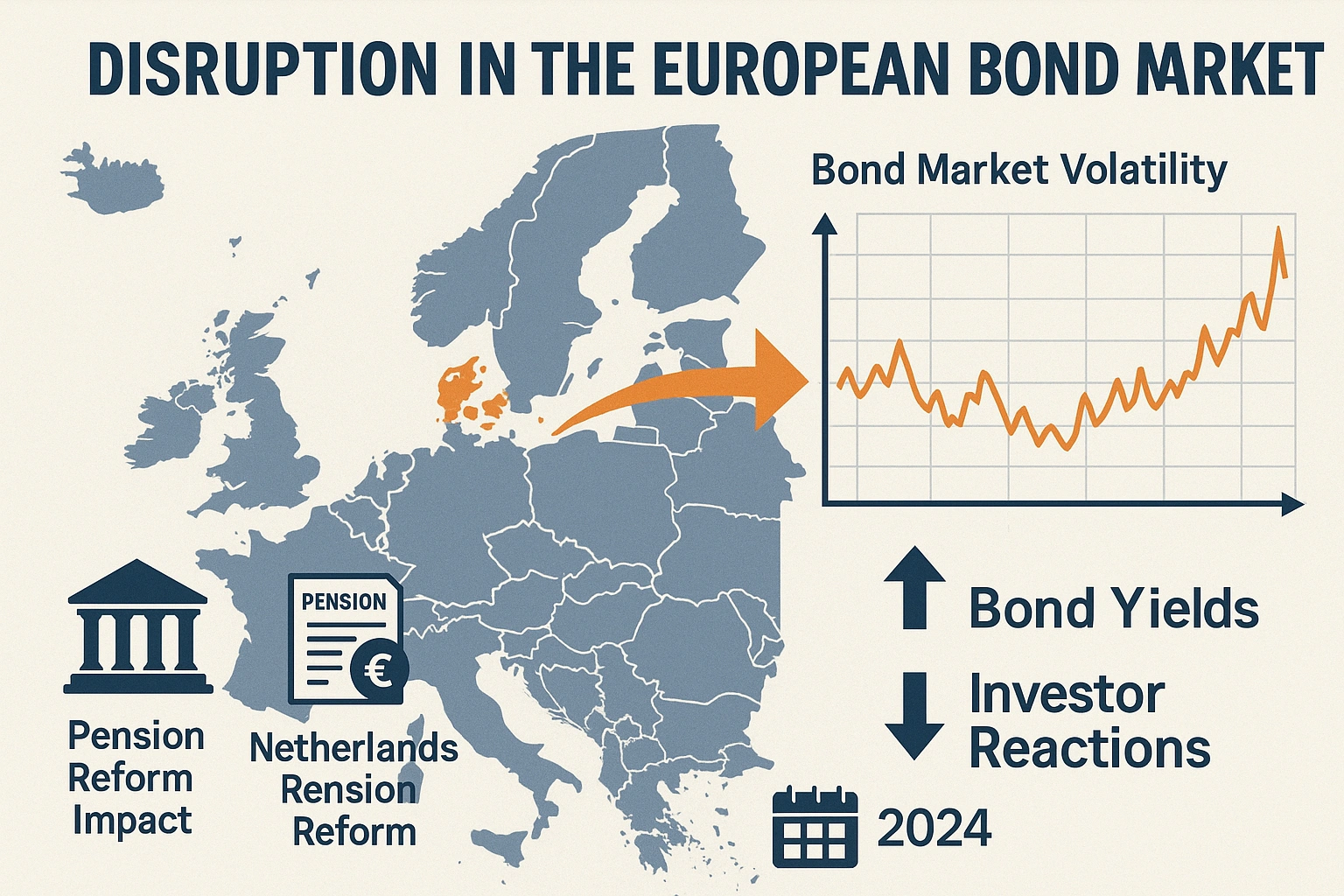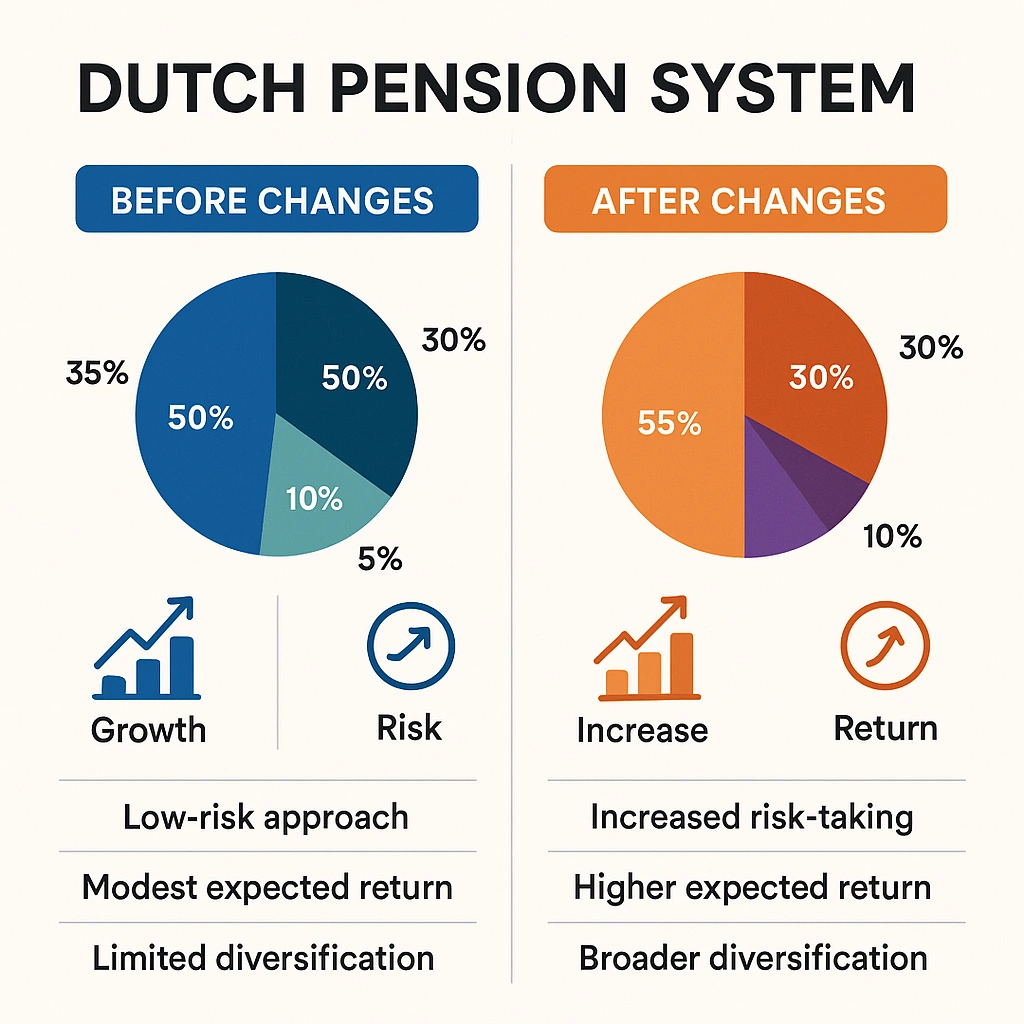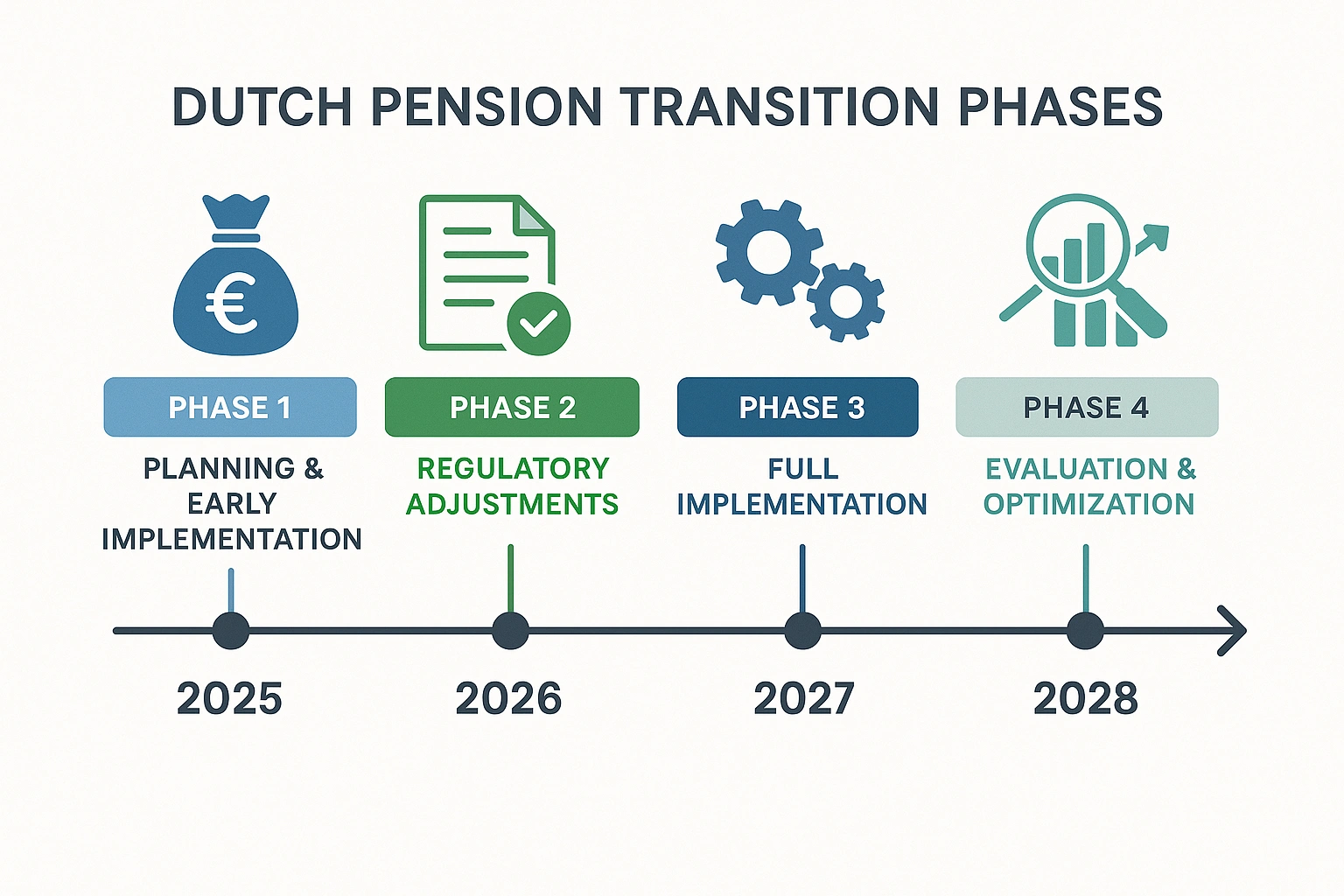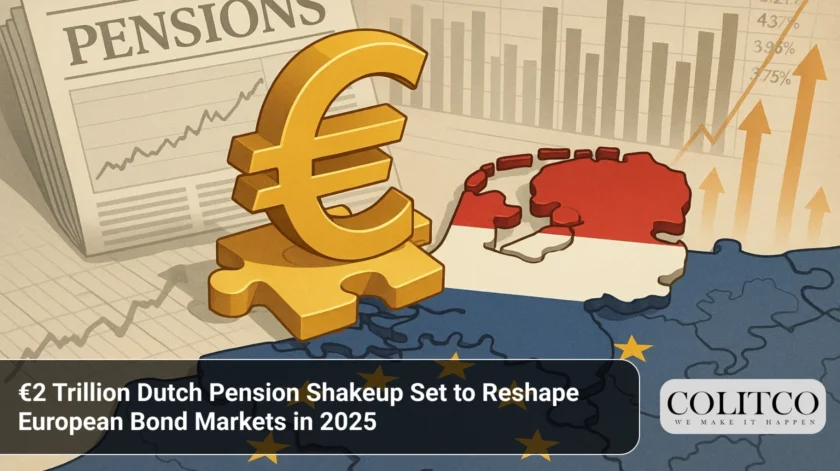A significant transformation of the Dutch pension system, Europe’s largest, is set to cause major disruptions in European bond markets in 2025. The overhaul, involving nearly €2 trillion ($2.3 trillion) in assets, aims to address an aging population and shifting labour market dynamics but is already pushing up yields on longer-dated bonds and increasing market volatility.
Impact on European Bond Yields and Volatility
The Dutch pension system holds more than half of all pension savings in the European Union and commands nearly €300 billion in European bond holdings. This reform began to affect bond and euro swaps markets well ahead of the official transition date on 1 January 2026, with traders positioning for volatility in long-dated swaps used by pension funds as hedging instruments. The volatility gauge for 30-year euro swaps in the swaps market has notably increased in recent weeks, contributing to rising euro funding costs.

Disruption caused in European Bond Market by Dutch pension system
Changes in Investment and Hedging Strategies
Dutch pension funds currently rely heavily on long-dated interest rate swaps to hedge future pension payment liabilities against interest rate fluctuations. Under the new system, younger workers’ pensions will shift towards riskier assets like equities, reducing the need for long-term hedges. Conversely, older members’ savings will target safer securities such as bonds but with shorter-duration hedges. This lifecycle investing model will significantly reduce the demand for long-dated swaps and bonds.

Changes in the Dutch Pension System
Transition Timeline and Market Risks
About 36 pension funds are scheduled to transition on 1 January 2026, with the rest following in six-month intervals until January 2028. The first wave’s simultaneous unwinding of long-dated hedges during a typically low liquidity period could cause market stress. Investment banks and brokers may face difficulties matching buyers and sellers, possibly leading to sharp steepening of the yield curve and market illiquidity.
Market participants are already cautious. Asset managers like BlackRock and Aviva Investors advise favouring shorter-dated maturities. JPMorgan Asset Management highlights that US Treasuries are gaining appeal over European government bonds. Barclays’ head of European Rates Research, Rohan Khanna, noted: “The market can become illiquid or jumpy in such situations.”

Transition Timeline of Dutch Pension
Political and Fiscal Complications
The Dutch political crisis adds uncertainty. The collapse of the government and caretaker administration in mid-2025 has delayed parliamentary pension debates. Social Affairs Minister Eddy van Hijum, who managed the transition, resigned. However, the planned one-year adjustment window allowing pension funds to pace hedge reductions remains expected to proceed, albeit with some delay possibilities.
Fiscal pressures in eurozone giants Germany, France, and the Netherlands also influence bond markets. German and French 30-year bond yields have climbed to multi-year highs since mid-2025, amid budget tensions and political crises—France faces a potential government fall this month. The pension sector’s largest exposures are to German, French, and Dutch sovereign bonds, according to ABN Amro strategist Sonia Renoult. A drop in pension demand may push governments toward issuing shorter maturities, increasing refinancing risks.
Also Read: Which Jobs Qualify for Trump’s ‘No Tax on Tips’ Policy?
Steepening Yield Curves and Market Outlook
The Dutch yield curve has steepened, especially between 10- and 30-year maturities, by nearly 50 basis points this year—the sharpest among EU peers. The combination of pension funds reducing long-dated bond holdings and increased government borrowing is reshaping the European fixed income landscape.
Some pension funds may reduce their long-dated hedges progressively before transition dates, easing the risk of market bottlenecks. The Dutch central bank remains confident the one-year adjustment period will provide sufficient flexibility for orderly portfolio changes.
However, market nervousness is expected to peak at year-end 2025 when the largest tranche of funds initiates the change. Deutsche Bank’s Pierre Hauviller stated: “Volatility trades in early January are already very crowded.”
Conclusion
The Dutch pension reform marks a profound change in Europe’s largest pension market, carrying significant implications for European government bond markets. With nearly €2 trillion in pension assets adapting investment and hedging approaches, markets face increased volatility, yield curve shifts, and liquidity risks.
Investors and policymakers must navigate these complex and evolving dynamics carefully to mitigate potential disruptions. This reform underscores the interconnected risks of demographic shifts, political instability, and fiscal pressures on Europe’s financial system in 2025 and beyond.












